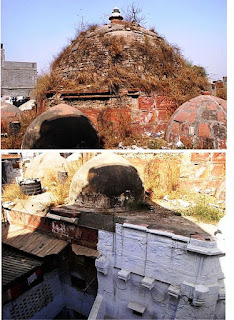Malik Maqbool tomb Delhi/ Image source
Jahan Khan or Malik Maqbul whose mausoleum in the Nizamuddin Basti in Delhi is the earliest octagonal tomb in India was the Wazir (Prime Minister) of the Delhi Sultanate under Firuz Shah Tughluq ((r. 1351–1388), the third ruler of the Tughlaq dynasty.
Also known as Khan-i-Jahan Maqbul Tilangani, Malik Maqbul was originally a Brahmin from Telangana in the service of the Kakatiya kingdom in eastern Deccan. He converted to Islam when the kingdom under Prataprudra was annexed to the Delhi Sultanate in 1323 during the reign of Ghiyasuddin Tughlaq who had sent his son Ulugh Khan (later Muhammad bin Tughlaq) to bring the Hindu kingdom under the Muslim rule. Malik Maqbul was known as Gannama Nayaka or Yugandhar before his conversion.
Malik Maqbul was given the title of Khan-i-Jahan by Firuz Shah Tughluq who had succeeded Muhammad bin Tughlaq in 1351 AD. Firuz Shah Tughluq appointed Malik Maqbul his Wazir. In this role Malik Maqbul managed the affairs of the state efficiently.
After the death of Maqbul in 1370, his son, Juna Shah, was made the prime minister by Firoz. He was, however, killed by Muhammad Khan, the third son of Firoz Tughlaq, when Juna Shah tried to wrest the control of the state and become the ruler himself.
Malik Maqbul lies buried in mausoleum in Nizamuddin West in Delhi. The mausoleum, built by his son Juna Shah, is considered the first octagonal tomb in India. Tomb of Sufi saint Shah Rukn-i Alam in Multan is the only other octagonal mausoleum in the Indian subcontinent that pre-dates this tomb.

Malik Maqbul was not a Brahmin; he belonged to the 'Mala' caste. Please ensure historical accuracy by rectifying all instances where he is incorrectly identified as a Brahmin.
ReplyDelete